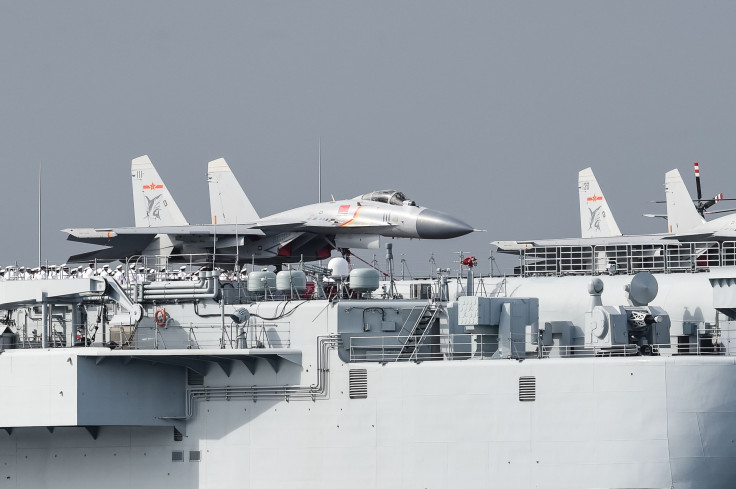US vs. China Military Strength: Comparing Defense Capabilities

According to a report published by the Pentagon on China's military power on Thursday, Beijing’s armed forces were expanding at a fast rate, which could soon “contest U.S. military superiority." The Congressionally-mandated report stated that China was trying to transform its military into a major global power by any means necessary.
“China uses a variety of methods to acquire foreign military and dual-use technologies, including targeted foreign direct investment, cyber theft, and exploitation of private Chinese nationals' access to these technologies, as well as harnessing its intelligence services, computer intrusions, and other illicit approaches," the Department of Defense (DoD) report said.
However, while the country was close to matching the military strength of the United States in some regards, the latter still had an upper hand in a number of defense aspects:
1. Chinese Army’s total ground force personnel stands at 1,020,000, while in 2018, the National Defense Authorization Act increased the U.S. Army’s authorized end strength to 1,026,500 soldiers from 483,500.
2. While China has only a single operational aircraft carrier, the U.S. military has 11. According to the South China Morning Post, China plans to have at least six aircraft carriers by 2035, four of which will be nuclear-powered.
3. China has 5,800 tanks, while the U.S. has 6,287 combat tanks, according to Global Fire Power.
4. The U.S. Navy tops China when it comes to the number of destroyers. The former holds 68 destroyers, while the latter has just 33.
5. The number of submarines the Chinese Navy has - including diesel attack, nuclear attack and ballistic missile ones - totals 70, while the U.S. Navy falls just two short.
6. China has 1,500 fighter aircraft while the U.S. has 2,362 of the same jets.
7. According to Newsweek, the U.S. has 652 deployed intercontinental ballistic missiles (ICBMs), while the recent Pentagon report said China has 90.
“Most of China’s missile programs, including its ballistic and cruise missile systems, are comparable in quality to other international top-tier producers. China produces a wide range of ballistic, cruise, air-to-air, and surface-to-air missiles (SAMs) for the PLA [Public Liberation Army of China] and for export, which has enhanced its primary assembly and solid propellant rocket motor production facilities,” the report said.
China’s military spending budget for 2018 was $170.4 billion – a significant increase from a decade ago when it was under $100 billion. “China has the political will and fiscal strength to sustain a steady increase in defense spending during the next decade, which will help support PLA modernization, develop an integrated military-civilian defense industry, and explore new technologies with defense applications,” the report stated.
It added: “China aims to complete military modernization by 2035 and make the PLA into a ‘world-class’ military by 2049, through both modernization as well as structural and command changes.”
The DoD said that although maintaining a “constructive, results-oriented relationship with China” was an important part of their strategy to successfully maintain peace in the Indo-Pacific region, it was wary of growing diplomatic tension between the two countries and said it was prepared for all forms of aggression.
“Although DoD engages with the PLA, DoD will also continue to monitor and adapt to China’s evolving military strategy, doctrine, and force development. The United States will adapt its forces, posture, investments, and operational concepts to ensure it retains the ability to defend the homeland, deter aggression, protect our allies and partners, and preserve regional peace, prosperity, and freedom,” the report said.
© Copyright IBTimes 2024. All rights reserved.






















